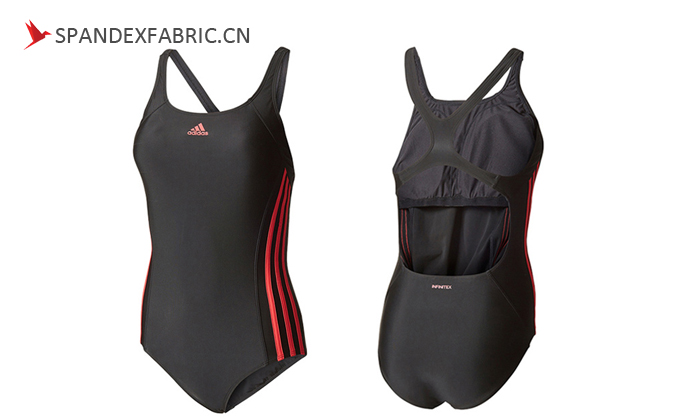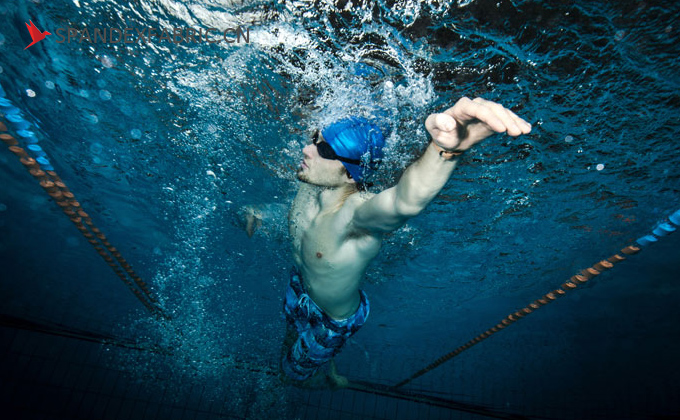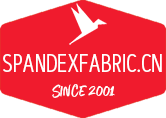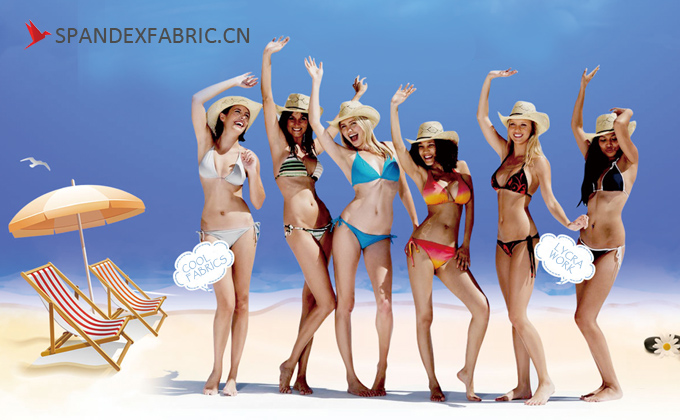It will be tricky to select the perfect swimsuit material for training or competition.
Nowadays, there are too many swimsuit brands in the market and their good performance can help us in some parts. The most important points selecting a swimsuit fabric is your demand or your customers’ demand- fitness, stretchable, smooth, soft etc.
The demand, some will be determined in fiber and some will be in the finished process.

▲Choosing good quality swimsuit fabrics
Swimsuit fabric should have quite a bit of 4 way stretch. This means that the fabric should stretch well when you stretch it parallel to the selvage as well as perpendicular to the selvage. Different spandex percentages and differences in how the fabric is made or embellished can affect how much stretch it has, so you should be aware that if you are sewing a muslin or making a pattern for the second time, variability in swimsuit fabrics can cause it to fit differently.
Types of Swimwear Fabric, mainly distinguished by composition:
Polyester + Spandex(or some call Lycra)
Spandex answers for the function of stretch. In general, the content of spandex is 5% – 20%.
Polyester fabric has dominated the competitive swimwear industry for several years. Whether blended with spandex or by itself, polyester is the leading fabric for competitive swimwear. New technologies in polyester have improved the hand and feel of the material, allowing it to surpass other fabrics. Polyester holds its color and is resistant to chlorine. Some polyester swimsuits includes:
- Strong resilient fibers
- Soft and comfortable fit
- Durable, resistant to shrinkage
- Abrasion/pilling resistant
- Quick drying
- Chlorine Resistant
- UV Protection
- Holds its shape
- Exceptional breathability
- 4 way stretch
- Launders easily
Polyester PBT + Spandex
PBT or Polybutylene Terephthalate
Combined with polyester yarns PBT has a natural stretch factor similar to Lycra.
Characteristics of PBT fabric are:
- Chlorine resistant
- Lightweight
- Matte finish
- Fast Drying
- Repels water
- Snag Resistant
Nylon + Spandex
Nylon fabric is an alternative fabric to polyester. Nylon is lightweight and offers a smooth fit. Nylon fabric has its disadvantages as it is not chlorine resistant and not as long lasting as polyester.
Nylon fabric are:
- Abrasion Resistant
- Lustrous, soft
- Low in moisture absorbency
- Excellent elasticity
- Launders easily

▲swimsuit
Shiny/Semi-dull/Full-dull(Matt)
Swimsuit fabrics come in Full-dull, also called matt, semi-dull and shiny. Either will make a beautiful swimsuit although some people find that the shinier fabric isn’t quite as flattering around lumps and bumps on the body. Additionally, you should keep in mind that shinier swimsuit fabrics are harder to sew as they slip around under your sewing machine foot more than a matte fabric. So, if you are new to sewing swimsuits, you might want to stick to a matt fabric to start.
For the price, the matt price is always higher than semi-dull and shiny.
Fabrics in this site are marked Shiny/Semi-dull/Matt in the sheet in color.
Solid color and Print
The swimsuit fabrics always in solid color and print. It will be determined by the designer on what kind of fabric to use.
We can find many colors and many print patterns in this site.
Mainly, all the Pantone color can be dyed and all the patterns can be print.
Reference Documentation Site: www.kiefer.com
If you have more questions in swimsuit fabrics, welcome to mail us [email protected]. Let’s learn from each other.









